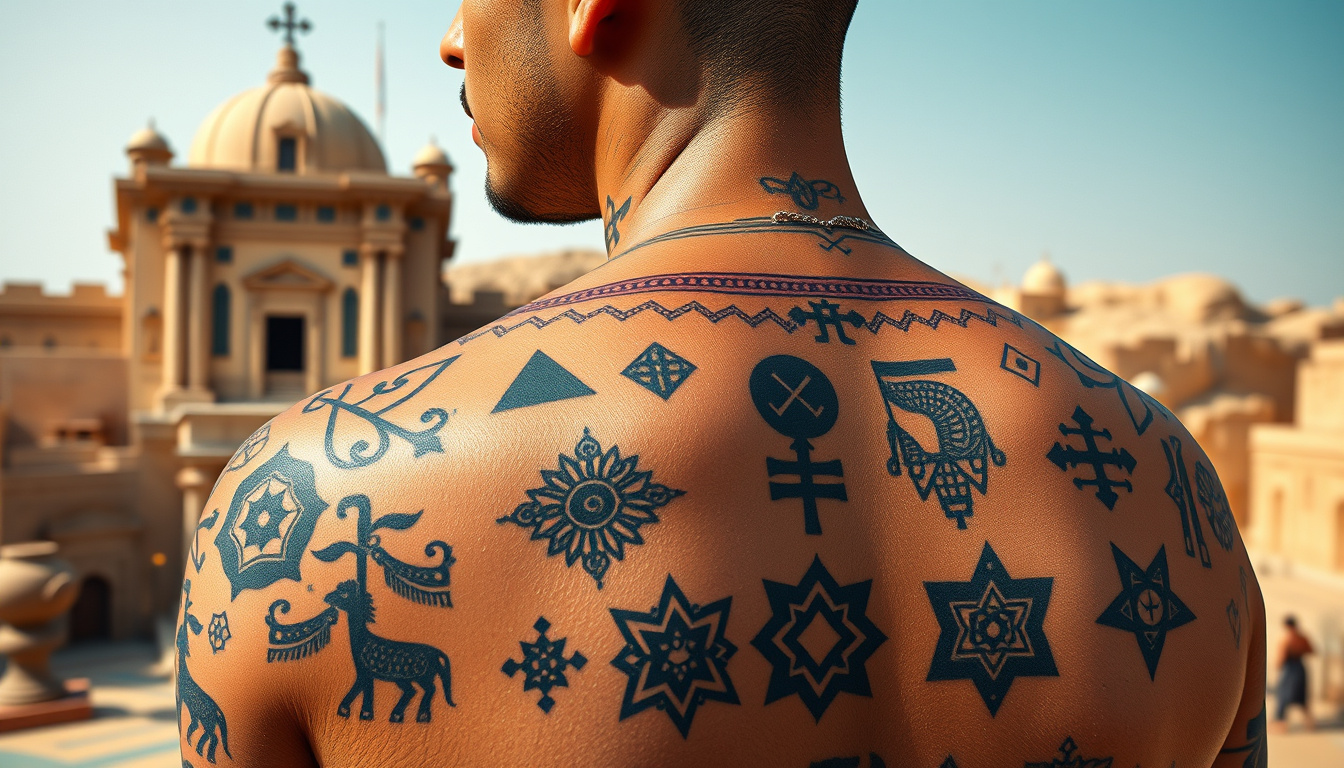Exploring the fascinating world of Coptic tattoo traditions offers a unique glimpse into the rich tapestry of Egypt’s history and culture.
Steeped in ancient rituals and spiritual significance, these tattoos are more than mere body art; they reflect the beliefs, customs, and identities of the Coptic Christian community, one of the oldest religious groups in Egypt.
In this article, we will delve into the historical significance of these tattoos, uncover common symbols and their meanings, examine contemporary practices, and discuss the vital role of preserving this cultural heritage for future generations.


Common Symbols and Their Meanings
# Common Symbols and Their Meanings in Coptic Tattoo Traditions
Coptic tattoo traditions are rich in cultural significance, deeply rooted in the history and spirituality of the Coptic Orthodox community.
These tattoos often serve as personal expressions of faith and identity, incorporating various symbols that hold profound meanings.
One of the most recognized symbols is the Coptic cross, which not only represents Christ’s sacrifice but also signifies a connection to Coptic heritage.
Another common motif is the Ankh, an ancient symbol of life and immortality, which reflects the Copts’ belief in eternal life through their faith.
Moreover, the use of biblical figures, such as the Virgin Mary and various saints, showcases a deep reverence for their spiritual guides.
Each tattoo is imbued with a unique story, and the choice of symbols can vary widely depending on personal experiences and regional influences.
Understanding the meanings behind these symbols can provide insight into the wearer’s beliefs, values, and connection to their community.
Thus, Coptic tattoo traditions not only serve as decorative art but also as a storytelling medium that echoes the rich, historical tapestry of the Coptic people.
Contemporary Practices and Evolution
## Contemporary Practices and Evolution
Coptic tattoo traditions, steeped in history, have evolved significantly in the modern era.
Traditionally, these intricate designs were small, often representing religious symbols or personal protective charms, and were primarily practiced among the Coptic Christian community in Egypt.
Today, while many aspects of these tattoo traditions remain intact, contemporary practices have embraced a broader artistic expression.
Modern-day Coptic tattoos incorporate vibrant colors and elaborate designs, attracting not only members of the Coptic community but also individuals drawn to their rich cultural significance.
This evolution reflects a blending of ancient heritage with contemporary art, showcasing the resilience and adaptability of Coptic tattoo traditions in the face of changing cultural landscapes.
Artists now experiment with combining traditional motifs with modern styles, thereby expanding the narrative and appeal of these tattoos, which serve as a means of identity and cultural pride.

Preserving Coptic Tattoo Heritage for Future Generations
## Preserving Coptic Tattoo Heritage for Future Generations
Coptic tattoo traditions hold a profound significance within the Coptic Christian community in Egypt, serving as an enduring symbol of identity, faith, and cultural heritage.
Historically, these intricate tattoos were not merely decorative; they were imbued with spiritual meaning and often used as a rite of passage, celebrating important life events such as weddings or childbirth.
Today, however, the rich tapestry of Coptic tattoos faces the risk of fading into obscurity.
As younger generations become increasingly disconnected from these traditions, efforts are being made to preserve these ancient practices for future generations.
Community workshops, cultural festivals, and educational initiatives are being introduced to raise awareness and interest in Coptic tattoo heritage.
Through storytelling and hands-on experiences, the knowledge and significance behind these tattoos are shared, ensuring that these beautiful expressions of faith and identity are not lost.
By embracing modern technology and social media, Coptic tattoo artists are also finding new ways to showcase their work, attracting attention from global audiences and reviving interest in their art form.
Ultimately, preserving Coptic tattoo traditions is essential for maintaining the cultural richness of Egypt’s diverse heritage, fostering a sense of belonging and pride among the Coptic community.
Frequently Asked Questions
What are Coptic tattoo traditions?
Coptic tattoo traditions refer to the practice of tattooing within the Coptic Christian community, particularly in Egypt.
These tattoos often carry religious significance and are used for cultural expression.
What is the historical significance of Coptic tattoos?
Coptic tattoos have a rich history intertwining with the identity and faith of the Coptic community, serving as symbols of cultural resistance and religious devotion, especially during periods of persecution.
What are some common symbols found in Coptic tattoos?
Common symbols in Coptic tattoos include the cross, the ankh (the Egyptian symbol for life), images of saints, and various biblical motifs, each carrying specific meanings related to faith and protection.
How have contemporary practices of Coptic tattooing evolved?
Contemporary practices of Coptic tattooing have evolved to include modern aesthetics and techniques while still honoring traditional designs and symbols, reflecting both cultural pride and adaptation to current societal norms.
What efforts are being made to preserve Coptic tattoo heritage?
Efforts to preserve Coptic tattoo heritage include community workshops, documentation of tattoo meanings and practices, and increased awareness through art exhibitions and cultural events that celebrate this unique tradition.

